EXPLORE DISCOVER PROTECT
We are the eyes on the seafloor keeping watch over the oceans that our children and grandchildren will inherit. The information we gather today guides actions that will shape the world tomorrow.
Marine Applied Research & Exploration’s (MARE) mission is to use science-based marine conservation efforts to help protect and restore the ocean’s invaluable, yet threatened resources. Using cost-effective and innovative deepwater robotic technology and data analysis expertise, MARE assesses changes in marine life and habitat over time to inform ocean management and support wild sustainable fisheries for future generations.
Find out more at www.maregroup.org
Letter from the Executive Director
This year the state of California reached a huge milestone: for the first time, we have a clear picture of the condition of marine life and habitats along California’s entire 1,100 mile coastline.
I’m proud to be able to say that MARE has been a leader and major contributor to this effort since its founding in 2003.The completion of the deepwater data baseline means changes to MARE’s work as well. The survey work that has produced this baseline has so far been limited to state waters.
But fish don’t respect political boundaries, and threats to the oceans don’t stop at the three-mile mark. A more integrated effort is needed to ensure that we manage the ocean effectively.
Over the past several years MARE has been laying the groundwork for just that. This year, for example, marked the conclusion of a four-year effort in partnership with NOAA to explore the impacts of climate change and ocean acidification on California’s deepwater coral habitats, much of which lie beyond state jurisdiction.
This year we also teamed with Oceana, the largest marine conservation organization in the world, and with my hero’s granddaughter, Alexandra Cousteau, to document unexplored deep-sea coral and sponge habitats off Southern California during a five-day expedition.
Oceana’s goal for the expedition was to identify areas that must be protected as the federal government considers opening new areas to fishing. MARE’s role, as always, was to provide accurate, unbiased information that managers can use to make the best possible decisions.
Wise stewardship of the oceans requires the most comprehensive and accurate information possible. Conflict between resource managers, advocacy groups, and fishermen is largely fueled by a lack of solid information. MARE helps fill that need, reducing sources of conflict, and uniting all parties in a collaborative effort to manage California’s marine resources sustainably.
I am grateful to all of those who made this past year such a success and look forward to continuing this expedition with you!
Best Wishes,
![]()
OUR IMPACT
2,325
KILOMETERS EXPLORED
2,045,000
ANIMALS IDENTIFIED
275
SITES VISITED
170,000
PHOTOGRAPHS TAKEN
1,350
DIVES COMPLETED
WORKSHOP OF KEY UNDERWATER RESEARCHERS OF CHANNEL ISLAND MPAS
In April 2016, MARE
sponsored a workshop convening 20 scientists, ocean managers, and other experts involved in underwater research around California’s Channel Islands. The long history of protection and extraordinarily productive, species-rich waters around the Channel Islands make the marine protected areas (MPAs) around the islands an intensely studied living laboratory. Over two days we reviewed the existing data and results, looked for overarching trends and themes, and began to assess efficacy of networked MPA design.
CALIFORNIA MPAS: THE GOOD AND BAD NEWS
In MARE’s first published paper
spanning 12 years of Channel Islands deepwater surveys, we documented a 270% increase in fish populations inside and outside the oldest network of California MPAs.
Huge populations of juvenile rockfish have just been detected in the Central Coast—an indicator of a potentially great year class of fish coming.
MARE also observed a die-off of many sea fans and sponges, possibly due to warmer waters experienced the past few years.
MARE SOIRÉE: A SUSTAINABLE FEAST
In September MARE
celebrated the ocean with nearly 100 friends at our 4th Annual MARE Soirée, raising $66,000 and surpassing last year’s donations!
The dinner was held at the beautiful Boyd Mansion at Maple Lawn, San Rafael’s historic landmark built in the late 1800s.
A special thank you to our Expedition Sponsor—Bay Area Beverage Company, Phantom sponsors Sam Schuchat & Ilana DeBare and Pete & Karen Weber, and all other sponsors.
Diving Deeper: 2016 Project Highlights
MARE Team Completes Statewide Survey of California’s Deep-Sea Habitats
For the last three years the MARE team has been spending long days at sea collecting baseline data of commercially and recreationally important fish in deep-sea habitats within California’s statewide network of marine protected areas (MPAs) for the California Department of Fish and Wildlife.
MARE biologist and director of ROV Operations Andy Lauermann called the completion of the project a big achievement. The data collected offers an unprecedented look at life along the state’s largely unexplored seafloor.
During the fall 2016 surveys along California’s central coast region the team began to see signs of rebounding fish populations, as the ROV swam through large schools of juvenile rockfish for over 10 minutes at a time. “This is the first wave of the next generation coming through,” says Rosen, which reminded him of the Channel Islands surveys the MARE team conducted in 2009. “This is not a little recruitment, it’s a massive recruitment.”
The team is hopeful that over the next few years big changes to fish populations will be detected. Continued exploration and long-term monitoring of these important habitats will arm the state with knowledge of the effectiveness and trends of statewide MPA network.
In August, MARE teamed up with Oceana and Alexandra Cousteau to document pristine habitats in and around the Channel Islands National Marine Sanctuary. During the five-day expedition ROV Beagle dove down 2,000 feet (610 meters) to capture video and still images of these deepwater habitats. Rocky reefs and underwater mountains provide nursery grounds and shelter necessary to support populations of recreationally and commercially important fish such as lingcod and rockfish.
During a second expedition around the Channel Islands this year the MARE team got a glimpse of our future ocean under high carbon dioxide conditions. The survey, part of a long-term climate change project by NOAA scientist Dr. Peter Etnoyer to map deep-sea coral gardens, explored unique deep-sea habitats where a stony coral species, Lophelia pertusa, is thriving in waters that are naturally highly acidic from increased levels of CO2.
“MARE is providing rare, valuable, and important live coral samples to the deep-sea coral research community,” says Dr. Etnoyer. “This puts the Beagle in a higher league.”
MARE Teams Up with NOAA,
Oceana to Survey Channel Islands
SharkCam Rescue
The MARE team was hired to perform a rescue mission of an autonomous underwater vehicle, or AUV, by the Woods Hole Oceanographic Institution (WHOI) that went lost while studying great white sharks off Mexico’s Guadalupe Island. MARE reconfigured ROV Beagle to grab the AUV that got trapped under a rock. The 30-minute rescue allowed the WHOI researchers to retain the important video it was collecting. Dramatic SharkCam footage of a great white shark attacking the AUV was featured on Discovery Channel’s SharkWeek.


